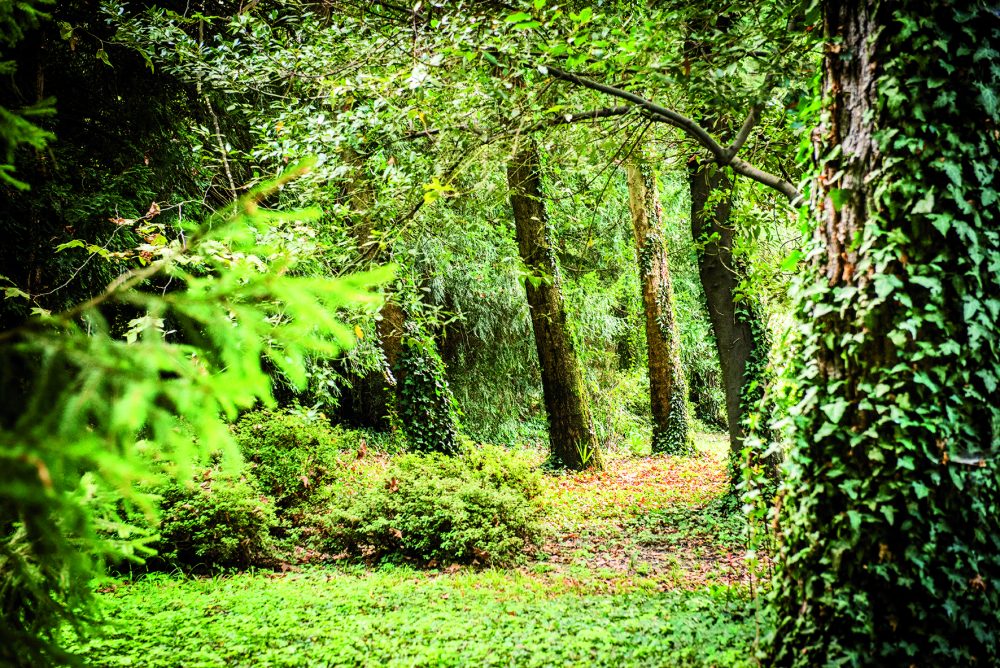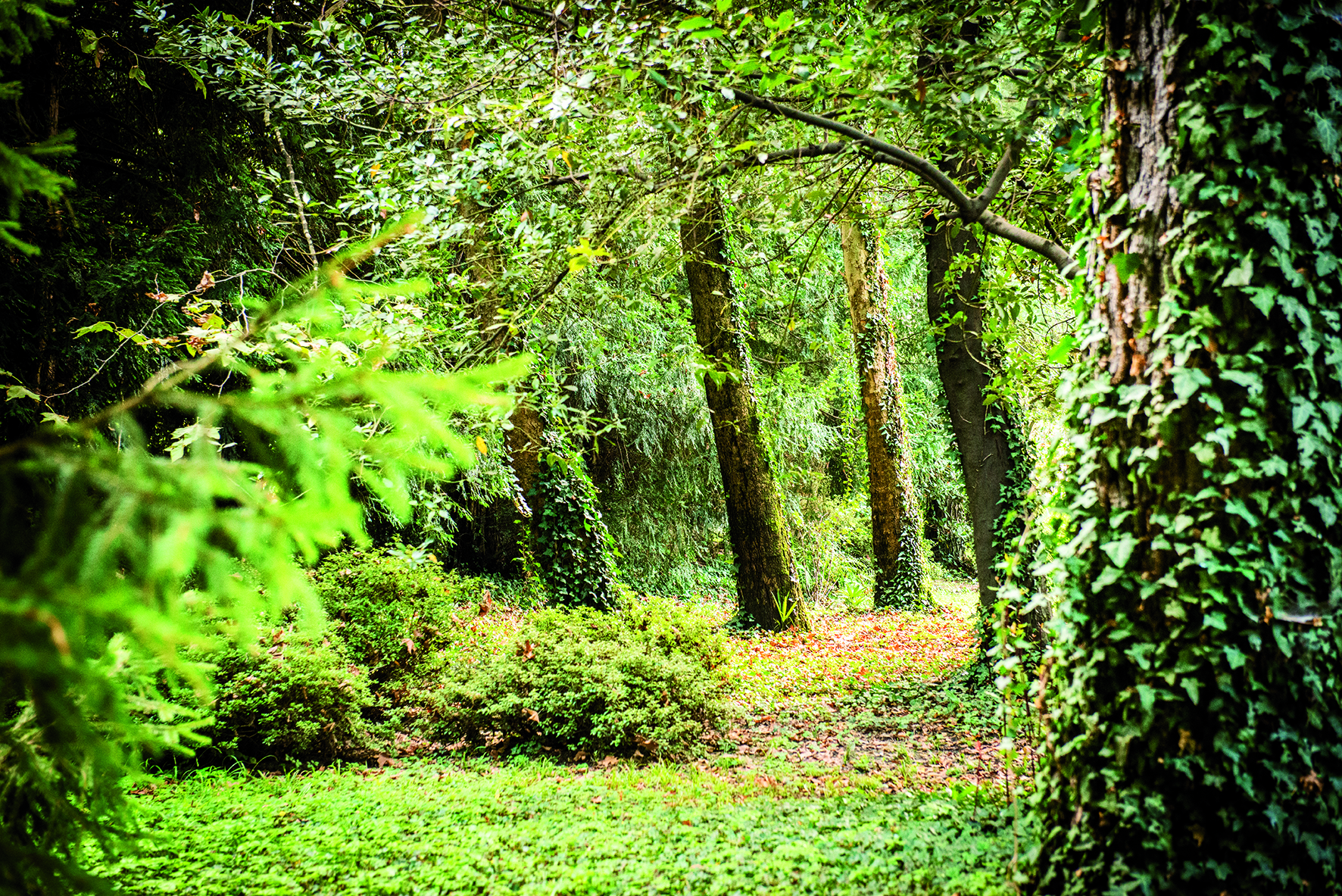The Forest Floor
The path we are about to take seems to be hidden from view.
Similarly, after admiring views, perspectives, and height, let us now look for what often has to be searched for, the low, shaded beauty of the forest floor. Let us discover its colours and shapes, which change with the seasons. Observing closely is essential, and often, those who observe know that the most beautiful things can be small and hidden.
In winter, the first to bloom are hellebores, known as Christmas roses, and snowdrops, sprouting amidst the grass which is still hard from the frost. Their stems are short, their corollas simple and fragile, white bells with green droplets at the tip of each petal. In the language of flowers, snowdrops symbolize hope, a joyful omen in the still-barren countryside, in the coldest, most sheltered corners of meadows.
At the end of winter, the sweet violet and the Parma violet begin to bloom. They are the flower of modesty and reserve, along with the blue flowers of the hepatica and periwinkle, which, like small and pale blue stars, are a privilege, possessing that attractive and reassuring beauty that only the shy manage to display. Then come the white anemones (Anemone nemorosa), derived from the Greek "ánemos," meaning wind, followed by crocuses and daffodils that multiply in small clusters. Lily-of-the-valley, blooms in May in cool, shaded areas, seem immune to trends and fashion.
Between September and November, restless cyclamens with marbled, heart-shaped leaves create cheerful carpets. They scatter their seeds by turning their stems into springs, forming extensive colonies of pink blooms near the old cedar stump. Elsewhere, scattered patches illuminate the dark foliage of the overhanging trees. Like little princes, without the public duties of a monarch, they appear and vanish like fireflies during the mating season.
All year round, we encounter ferns, ancient plants that thrive and multiply when they are happy. They creep between stones, embodying both strength and humility, and inhabit shaded, damp areas. They lend the garden an untamed yet geometrically fresh look, a blend of dishevelled elegance and natural grace.

The path we are about to take seems to be hidden from view.
Similarly, after admiring views, perspectives, and height, let us now look for what often has to be searched for, the low, shaded beauty of the forest floor. Let us discover its colours and shapes, which change with the seasons. Observing closely is essential, and often, those who observe know that the most beautiful things can be small and hidden.
In winter, the first to bloom are hellebores, known as Christmas roses, and snowdrops, sprouting amidst the grass which is still hard from the frost. Their stems are short, their corollas simple and fragile, white bells with green droplets at the tip of each petal. In the language of flowers, snowdrops symbolize hope, a joyful omen in the still-barren countryside, in the coldest, most sheltered corners of meadows.
At the end of winter, the sweet violet and the Parma violet begin to bloom. They are the flower of modesty and reserve, along with the blue flowers of the hepatica and periwinkle, which, like small and pale blue stars, are a privilege, possessing that attractive and reassuring beauty that only the shy manage to display. Then come the white anemones (Anemone nemorosa), derived from the Greek “ánemos,” meaning wind, followed by crocuses and daffodils that multiply in small clusters. Lily-of-the-valley, blooms in May in cool, shaded areas, seem immune to trends and fashion.
Between September and November, restless cyclamens with marbled, heart-shaped leaves create cheerful carpets. They scatter their seeds by turning their stems into springs, forming extensive colonies of pink blooms near the old cedar stump. Elsewhere, scattered patches illuminate the dark foliage of the overhanging trees. Like little princes, without the public duties of a monarch, they appear and vanish like fireflies during the mating season.
All year round, we encounter ferns, ancient plants that thrive and multiply when they are happy. They creep between stones, embodying both strength and humility, and inhabit shaded, damp areas. They lend the garden an untamed yet geometrically fresh look, a blend of dishevelled elegance and natural grace.
Audio

